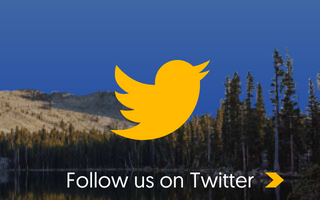Internet Connection
Troubleshooting Guide
Connection issues?
This guide will have you back online in no time.
1. Rebooting Your PoE:
Locate the Power Over Ethernet adapter (PoE). You can find the PoE by tracing the Ethernet cable from the “WAN / INTERNET” port on the router to the “LAN / Data” port on the PoE. If you do not have a router, the PoE will be plugged directly into the Ethernet port on your computer. Once the PoE is located, unplug the PoE power cable for a minimum of one minute. Once unplugged, check that the light on the PoE has turned off. After one minute, plug the power cable back in and confirm that there is a solid light on the PoE (not blinking), then test your connection.
Note: After rebooting the PoE, the Internet may take up to ten minutes to reestablish a connection.
![Internet Connection Troubleshooting Guide [2022] 1 Screen Shot 2022 08 18 at 11.01.03 PM](https://coniferinternet.com/wp-content/uploads/2022/08/Screen-Shot-2022-08-18-at-11.01.03-PM-1024x255.png)
2. Rebooting Your Router:
This step only applies if you connect to the Internet wirelessly (Wi-Fi) via your laptop or another wireless device. Locate your router. Routers are usually flat and may stand vertically or lie flat. Routers are usually black or white with lights on the front and Ethernet cable ports on the back. Some routers have external antennas. Cambium, TP-LINK, Netgear, Linksys, and Belkin are common router brands. To reboot your router, unplug the power cable for ten seconds, then plug it back in. Wait five minutes for the router to reboot, then test your Internet connection.
![Internet Connection Troubleshooting Guide [2022] 2 Screen Shot 2022 08 18 at 11.01.32 PM](https://coniferinternet.com/wp-content/uploads/2022/08/Screen-Shot-2022-08-18-at-11.01.32-PM-1024x242.png)
3. Checking Your Wi-Fi Connection:
After completing Steps 1 and 2, verify on your computer or wireless device that you are connected to your Wi-Fi network. If not, reboot/restart your computer or device and reverify.
Check your router and PoE cable connections carefully. Confirm that they are plugged into the correct Ethernet cable ports and wall sockets securely (see steps 1-2).
4. Direct Connection Test:
If you still have connection issues after rebooting your equipment, our phone technicians will most likely ask you to try a direct connection test. This is done by simply unplugging the ethernet cable from the router WAN/INTERNET port and plugging it directly into your desktop or laptop computer. Performing this test removes your router from the line of connection. This will help to determine if said router is causing a connection issue
![Internet Connection Troubleshooting Guide [2022] 3 Screen Shot 2022 08 18 at 11.02.26 PM](https://coniferinternet.com/wp-content/uploads/2022/08/Screen-Shot-2022-08-18-at-11.02.26-PM-1024x515.png)
Equipment and Terminology Guide
Equipment to Be Familiar With:
Router – Wireless routers broadcast Wi-Fi throughout your home. The router allows multiple devices to connect to the Internet wirelessly. Routers are usually black or white with lights on the front and Ethernet cable ports on the back. Some routers have external antennas (see page 1/3, step 2).
PoE (Power Over Ethernet) – This unit supplies power to the Conifer dish. It is a small, rectangular box with a power cable on one end and two Ethernet cables on the other. One of these Ethernet cables is routed outside to the dish and is commonly black. The other Ethernet cable connects the PoE to either your wireless router or computer. It is commonly blue or yellow (see page 1/3, step 1).
Cable – Cable, cord, wire, and Cat-5 are interchangeable terms for the Ethernet cables we use.
Dish – Dish, antenna, and radio are interchangeable terms for the dish unit on your roof or in your yard. The dish transmits and receives Internet data from the Conifer tower.
Other Terms:
Mbps – Abbreviation for Megabits per second. Internet speed is commonly measured in Mbps. GHz – Abbreviation for Gigahertz, a unit of frequency used by wireless radios.
2.4 GHz – This is the most common frequency used by wireless routers. 2.4 GHz penetrates walls and floors more efficiently to provide better Wi-Fi performance throughout your home.
5.8 GHz – Another common frequency used by wireless routers. It is less prone to interference but does not penetrate walls and floors as efficiently as 2.4 GHz. 5.8 GHz works best when used within close proximity to your router or an open area (a large warehouse or yard, for example).
Wi-Fi Bars – Wi-Fi bars will show on the display of your wireless device when connected to Wi-Fi. The number of Wi-Fi bars displayed indicates how strong the connection between your router and device is. The number of Wi-Fi bars displayed is an indication of how strong the connection between your router
and device is. Wi-Fi bars are NOT an indication of how strong the connection between your outside Dish and the Conifer tower.
Direct Connection – If you have connection issues, our phone technicians will most likely ask you to connect your computer directly to the PoE. See page 2/3 for instructions.
Reboot or Power Cycle – Put simply, this means manually unplugging your equipment from the power source for one minute, then plugging it back in. See page 1/3 and complete steps 1-3 to reboot all of your Conifer equipment.
FAQ
Frequently Asked Questions And Answers
A: There are several reasons your internet might be down. Here’s a list of possible reasons and what to check:
Your WiFi router. A router is the little box with 2 (or more) antenna sticking out the top, it’s what broadcasts your internet signal wirelessly throughout your house. It does a lot of heavy lifting and rarely gets much attention. First be sure to give your router a nice dusting from time to time, and when your internet goes down try unplugging it from the outlet for at least 60 seconds, then plugging it back in (this is called a power cycle). Most of the time that will do the trick.
- The radio antenna. The radio is the equipment we put up somewhere high, usually near or on the roof. It’s the thing that catches the signal from our towers and sends it down to your WiFi router. Electricity is fed to the radio from a little black box inside your house (usually near the router) called a POE (Power Over Ethernet) that is plugged into the radio, your router, and an outlet. Try to power cycle your radio antenna the same way as your router by unplugging the POE from the outlet for at least 60 seconds and plugging it back in.
- The radio antenna + Mother Nature. We’ve seen it all… critters chewing through cables, tree branches falling on equipment, conspiracy theorists stealing other people’s antenna because they don’t want their minds read… all kinds of stuff. If power cycling your router and radio doesn’t work, and if it’s possible, go outside and do a quick visual inspection and make sure something didn’t physically happen to the equipment.
- Your device. “Device” is a generic term for anything that connects to your internet signal like a laptop, phone, iPad, Roku, Smart TV, etc… Sometimes it’s just the device itself having a hard time connecting. Try turning it off and back on again. If you power cycled your router and antenna your device may need to be rebooted too. After it’s powered back up it can sometimes take several minutes for everything to start talking to each other again, so try to be patient. Also, be sure that your device is trying to connect to your router’s WiFi and not your neighbor’s WiFi.
- Our tower. Towers usually sit on hill tops and get a lot of abuse from the weather (and sometimes people), so the equipment up there can be affected. Once again, we’ve seen it all: A thick ice crust over the entire tower, radio dishes dented by falling ice, floods, fire, shotguns… Whatever the case, rest assured, if the trouble is with the tower, we already know about it and are working on fixing it. We try to send out alerts as soon as possible via email, Facebook, and recorded messages on our phones to keep you updated.
- If none of those things work, and you haven’t seen a message about a tower outage, please give us a call 866-378-8393 M-F 8-4. We also have a third party after hours call center that can help with some basics if you need help outside our regular office hours, you can reach them at the same number.
A: Speed is how fast your devices connect and exchange information through your internet connection; it’s measured in Mbps (Megabits per Second). Typical speeds for residential fixed wireless services, is anywhere from 3-25 Mbps download and 2-5 Mbps upload. It’s very important you have the right speed for your needs. If all you do is check your email from time to time, you don’t need much. If you have a house full of people all trying to stream their shows at the same time you need a lot more!
Data is how much you use your connection and how often. Conifer provides unlimited data with all of our monthly packages, so you won’t even need to think about that with us.
A: We love streaming! It’s such a convenient way to watch what you want when you want. Minimum suggested Mbps for streaming on one device at a time is 5 Mbps*. The more devices you want to use at the same time the more speed you’ll need.
*Different definition standards can require higher speeds for streaming too, so be mindful of High Definition, 4K, or 1080pi standards.
A: Oh there’s lots of ways these days… First off, you’ll need a device to stream with like a smart TV, Fire Stick, Roku, Apple TV and most gaming systems allow for streaming as well. These devices connect to the internet and allow you to download apps for different streaming services like HBO, Showtime, Amazon, Disney, Stars, CBS, NBC, ABC, Comedy Central, the list goes on and on… Most of those apps have a monthly subscription and cost usually in the $5-15 per month range. The neat thing about the apps is that you can turn them on and off as needed. If you only have one show you like to watch with a particular app, only pay for it while you’re watching, then you can turn it off again until the new season comes out and save some money.
A: This one is complicated… The real concern about speed with cameras is the upload speed. Security camera technology changes constantly and so do their network requirements. Here’s a list of just some of the things that add to the speed demand of your camera system: How many cameras you have, the resolution quality of the cameras, if you’re trying to view them live from off-site, and how many you’re viewing at once. Many camera systems you see now-a-days have no on-site recorder (AKA: DVR- Digital Video Recorder, or NVR- Network Video Recorder), this means all your footage is stored in the cloud and the cameras only work with an active internet connection. If this is the case for your cameras, try to only view one at a time for improved performance.
Here’s our recommendation for security cameras in a rural area (if you’re still shopping)- Get cameras that store their footage to an on-site recorder. This way, if your internet connection does go down, or the speed is not sufficient, the full HD footage from the cameras will at least still be saved to the recorder on-site. These systems still connect to the internet so that you can view them off site, but this configuration gives you a back-up for when things inevitably go sideways as they do here in the mountains.
Whatever the case- allow yourself at minimum 1.5-2 Mbps of dedicated upload speed to view just one camera off-site at a mid-range resolution.
A: Click on the link conifer.speedtestcustom.com to test your speed.
Keep in mind: A speed test will only be testing the speed that’s available to the device you are running the test from. So, if someone else in the house is watching TV, or you’ve got cameras on, or a smartphone, or any other kind of active device using up some speed, the test will only show what’s left over for the device you’re using. To get a more accurate representation of your speed, be sure to turn off or disconnect anything else that may be using your internet first. Also try running a test using just WiFi, then hardwire your computer directly to your router and try again. Oftentimes, it’s the wireless connection causing some slow down.
A: Ya gotta get a new router.
If you happen to be renting one from us, and the cause was normal electronic stuff, we’ll cover the cost. If the cause of the issue was something like your dog peeing on it, or your kid using it as a bike ramp, you’ll need to pay for it.
If you bought the router out-right from us or another retailer, then you will need to purchase a new one.
The cost of a new WiFi router from us is $99 to purchase. Or you can do like we do and order one from Amazon. The choice is yours.
A: Here at Conifer, we’re what’s called a WISP, Wireless Internet Service Provider. We provide fixed wireless internet service versus hardline or satellite (we’ll explain those in a bit). Fixed wireless means that we have a network of towers on hilltops that send out the internet connection wirelessly to our customers; that signal is received via a radio antenna we install on your home/building. A line-of-sight is required from your location to one of our towers. Because of the nature of the geographical area we live in with all of our beautiful hills, mountains, and valleys, line of sight can sometimes be tricky and there are areas we can’t serve.
Now… hardline internet service… This is when there is a physical wire that runs all the way from your router, out the house, down the street, and off to eventually meet up with a fiber optic connection somewhere. To be fair and honest: this is currently the fastest and cheapest kind of internet service you can get. If you can get it, the problem is, in rural areas, it’s hard to get.
Satellite internet service… This is when you have a satellite dish on your roof that gets the internet signal from a geo-synchronous satellite in orbit around the planet. To be fair and honest: it’s the only kind of service some folks can get because of their hard to reach location, but it’s also the slowest and most expensive.
A WISP provider falls somewhere between those two, we have slower and more expensive service than hardline, but available in more places. And faster, cheaper service than satellite, but not available in as many places.
It’s important to note that none of these types of service are perfect, all have their pros and cons, but we hope this helps sort them out a bit. If that’s all still a little confusing, please watch this video that helps out with some slick illustration and snappy music: How Things Work
A: No.
But to be fair, the antenna we put up does look a bit like a satellite dish, except it’s not. It points to a tower nearby, not into space. For further explanation please see above.








